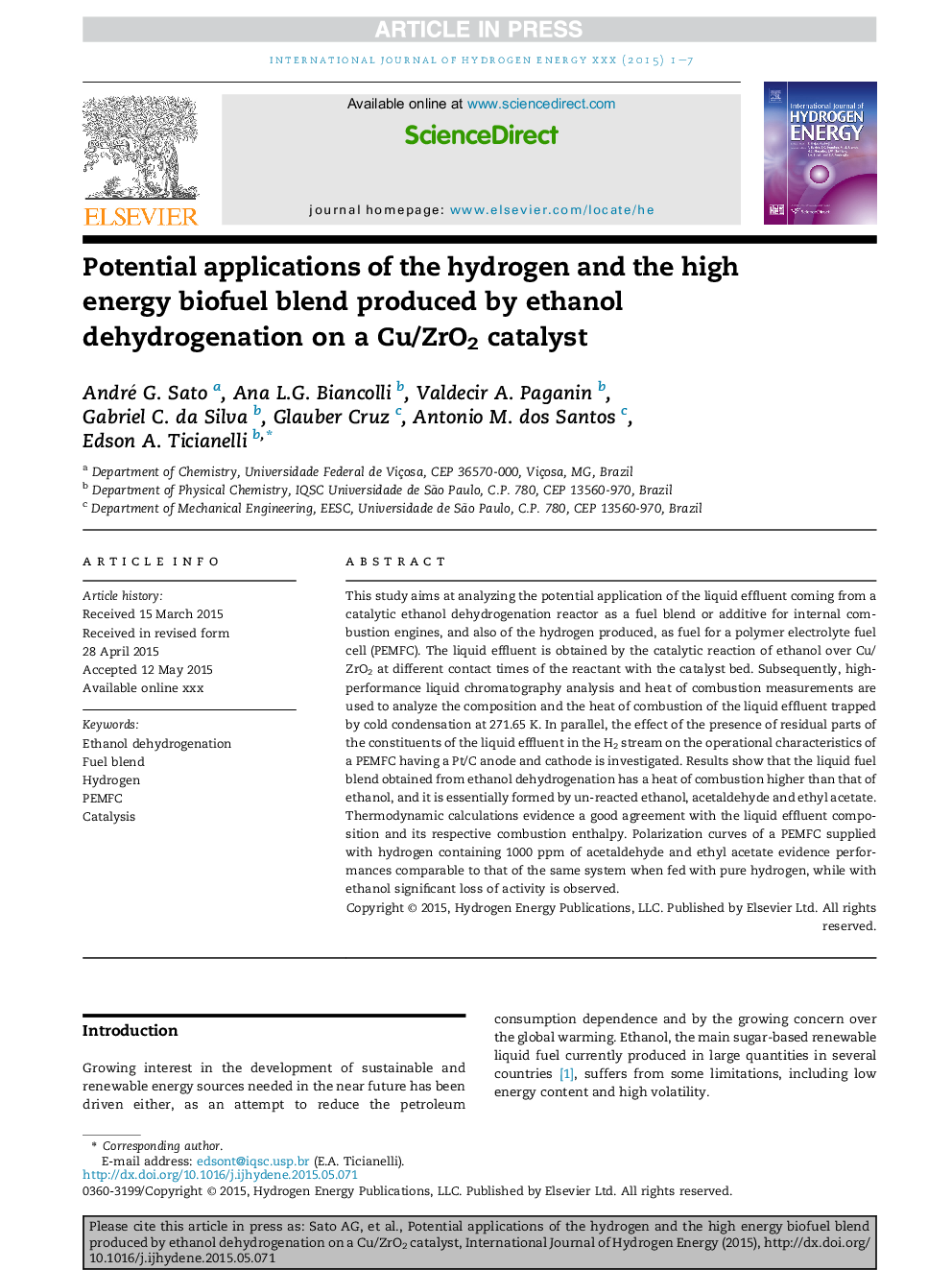| Article ID | Journal | Published Year | Pages | File Type |
|---|---|---|---|---|
| 7713854 | International Journal of Hydrogen Energy | 2015 | 7 Pages |
Abstract
This study aims at analyzing the potential application of the liquid effluent coming from a catalytic ethanol dehydrogenation reactor as a fuel blend or additive for internal combustion engines, and also of the hydrogen produced, as fuel for a polymer electrolyte fuel cell (PEMFC). The liquid effluent is obtained by the catalytic reaction of ethanol over Cu/ZrO2 at different contact times of the reactant with the catalyst bed. Subsequently, high-performance liquid chromatography analysis and heat of combustion measurements are used to analyze the composition and the heat of combustion of the liquid effluent trapped by cold condensation at 271.65Â K. In parallel, the effect of the presence of residual parts of the constituents of the liquid effluent in the H2 stream on the operational characteristics of a PEMFC having a Pt/C anode and cathode is investigated. Results show that the liquid fuel blend obtained from ethanol dehydrogenation has a heat of combustion higher than that of ethanol, and it is essentially formed by un-reacted ethanol, acetaldehyde and ethyl acetate. Thermodynamic calculations evidence a good agreement with the liquid effluent composition and its respective combustion enthalpy. Polarization curves of a PEMFC supplied with hydrogen containing 1000Â ppm of acetaldehyde and ethyl acetate evidence performances comparable to that of the same system when fed with pure hydrogen, while with ethanol significant loss of activity is observed.
Related Topics
Physical Sciences and Engineering
Chemistry
Electrochemistry
Authors
André G. Sato, Ana L.G. Biancolli, Valdecir A. Paganin, Gabriel C. da Silva, Glauber Cruz, Antonio M. dos Santos, Edson A. Ticianelli,
